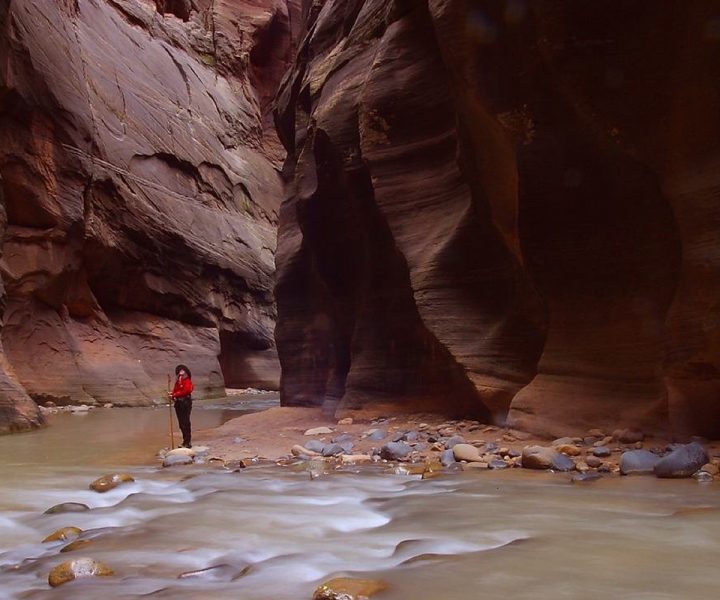
When visiting Zion National Park, a visit to the Narrows needs to be at the top of your must-do activities list. The Narrows at Zion is one of the most exciting and coolest hikes in any U.S. national park. All the advice found online and in guidebooks can be overwhelming, so we’ve narrowed down some things you may not know about hiking the Narrows, so you can start planning for this amazing adventure! 1. Take the First Shuttle of the Day Not everyone is a morning person, but one of the most important and best things you can do before hiking the Narrows is taking the first shuttle of the day. By doing this, you’ll not only beat the crowds but also beat the sun, which can be exceptionally cruel during the afternoon. 2. Rental Equipment is Not Always Needed You may read a lot of advice online that tells you that you HAVE to rent Neoprene socks, specifically from Zion Adventure Company or canyoneering shoes. However, you may be better off not spending that extra money and carrying that extra weight. You may need to purchase or rent appropriate equipment if you are planning on doing the hike during winter or early spring, as the Virgin River will be cold and the rocks will be slippery.
3. You Can Get Free Walking Sticks at the Entrance This is another reason we recommend getting there as early as possible. At the entry of the Narrows, you can find piles of sturdy walking sticks left behind by fellow hikers, and grab yourself a walking stick. Just make sure to leave it behind once you return, so someone else can use it. 4. No Permit is Required If you only have a few hours to spend in Zion, or this is your first time hiking the Narrows, the best way to do this is take the hike bottom-up. You don’t need a day permit for this, but if you’re planning on camping on Zion or want to hike the entirety of the 16-mile trail, you need to enter a lottery to get a permit. 5. Water Levels Can Change Without Any Warning The possibility of flash flooding always comes up whenever you’re hiking one of southern Utah’s national parks. It’s mind-boggling to comprehend just how quickly and violently they come on, so always check the weather before heading out, and talk to a ranger about flash flood potential.
 Your Privacy Choices
Your Privacy Choices
 The
The